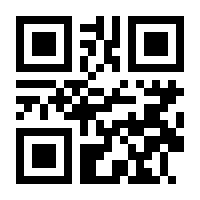Dimensi-dimensi Komunikasi Efektif dalam Relasi Bimbingan dan Konseling
Abstract
DIMENSIONS OF EFFECTIVE COMMUNICATION IN GUIDANCE AND COUNSELING RELATIONS.
The growth of effective communication between guidance and counseling teachers and students is a facility to achieve the goal of guidance and counseling in schools. Quality of communication will psychologically stimulate students to involve themselves intensively in the process of providing treatment. This condition will encourage students to open themselves to understand the personal characteristics, and willing to work together to explore various alternatives for self-development, making choices and decisions, and solving their problems. Students who are less open to guidance and counseling teachers are motivated by various factors, including allegedly by low professional competence of guidance and counseling teachers in developing communication that facilitates the provision of assistance for students. Thus, guidance and counseling teachers need to have communication competence in order to improve the effectiveness of aid in guidance and counseling services. The dimensions of the communication shall include: (a) the empathic behavior; (b) the acceptance and respect of students; (c) the warmth and attention; (d) openness and sincerity; and (e) concreteness and specificity of expression.
References
Blocher, D. H. (2006). Developmental counseling. New York: John Willey & Son.
Brammer, L. M. (2003). The helping relationship process and skils (SecondEdition). Englewood Cliffs, New Jersey: Prentice-Hall.
Carkhuff, R. R. (2000). The art of helping in the 21st century (Vol. 8). Pelham, MA: Human Resource Development Press.
Egan, G. (2002). The skilled helper: models, skills, and methodes for effective helping. Monterey, California: Brooke Cole Publishing.
Muro, J. J., & Kottman, T. (2005). Guidance and counseling in the elementary and midde schools. Agoura, CA: Brown & Benchmark.
Myrick, R. D. (2003). Developmental guidance and counseing: A practical approach (second Edition), Minneapolis: Educational Media Coorporation.
Nugent, F. A. (2001). Professional counseling. Belmont, California: Brooks Cole Publishing Company.
Osipow, S. H., Walsh, W. B., & Tosi, D. J. (1984). A survey of counseling methods. Illinois: Dorsey Press.
Shaw, M. E., & Coustanzo. (1982). Theories of social psychology. Singapore: McGraw-Hill Book Company.
Schmidt, J. J. (2004). Counseling in school essential service and comprehensive programs. Boston: Aliyah Bacon.
Shetzer, B., & Stone, S. (2000). Fundamental of counseling. Boston: Houghton Mifflin Company.
Yusuf, S. L. N. (2010). Psikologi perkembangan anak dan remaja. Bandung: Remaja Rosdakarya.
Copyright (c) 2019 Suherman

This work is licensed under a Creative Commons Attribution 4.0 International License.


